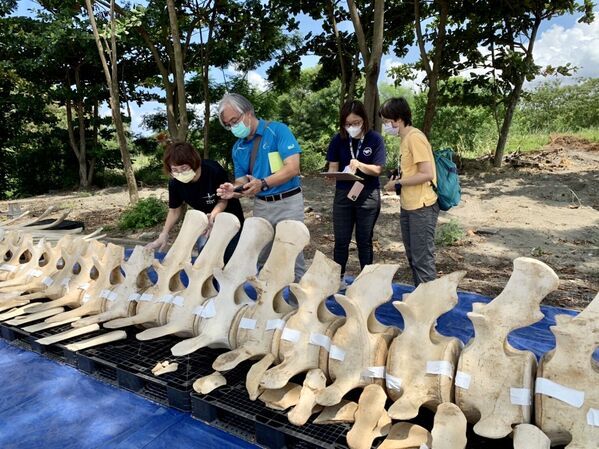
In order to allow the public to better understand the significance and value of Taiwan's first stranded blue whale (Balaenoptera musculus) , the Ocean Conservation Administration (OCA), in collaboration with the National Cheng Kung University and the National Museum of Marine Biology and Aquarium, have adopted a 3D modeling technology to assist in the restoration of the original skeleton to recreate the original appearance of the blue whale.
According to the OCA, the discovery of blue whales along the Changbin coastline in Taitung in January 2020 was the first record of a blue whale being stranded in Taiwan. Because of the scarcity of blue whales in the world and the preciousness of the specimens, the OCA invited experts in the field of cetaceans in Taiwan to jointly conduct academic research. The "Memorandum of Understanding on Joint Research on Skeletal Specimens of Blue Whales" was signed with the National Cheng Kung University Marine Biology and the Cetacean Research Center (MBCRC) and the National Museum of Marine Biology and Aquarium (NMMBA) on November 29, 2021. It is hoped that the skeletal specimen of the whole body of the blue whale can be restored and reconstructed for public display to promote marine environment education and conservation concepts.
The OCA further stated that the stranded blue whale, although a juvenile, was 20 meters in length and not only had a lot of cartilage tissue, but also had a severely fragmented skull, both of which posed a big challenge to restoration and preservation work. The bones had to be steamed until the flesh was completely detached, then repeatedly de-oiled, dried and de-colored over a long period of time. Only then could the bones be stored in a medium to long-term state before the detailed restoration and positioning of the broken bone fragments and then finally the coloring and pre-assembly. In order to keep the original bones intact and correctly assembled, the entire blue whale skeleton was modeled by 3D scanning and then the virtual skeleton was assembled through digital modeling. At the same time, the missing bone parts of the head were simulated and repaired, providing an important reference for the subsequent reconstruction technology of original bone parts.
At present, there are about 156 blue whale skeleton parts (including baleen plates and attached fishing gear ropes) that have been pre-processed by the National Cheng Kung University, all of which have been handed over to the NMMBA for the next stage of skeleton restoration. It is expected that the skeletons of the blue whale will be unveiled at the museum in the summer of next year (2023). For those interested in marine biology, don’t miss out on the latest updates!
Responsible authority and spokesperson: Wu Long-Jing, OCA Deputy Director-General
Contact number: 07-3383203 or 0919-613-467
Issue Date: Aug 23, 2022
